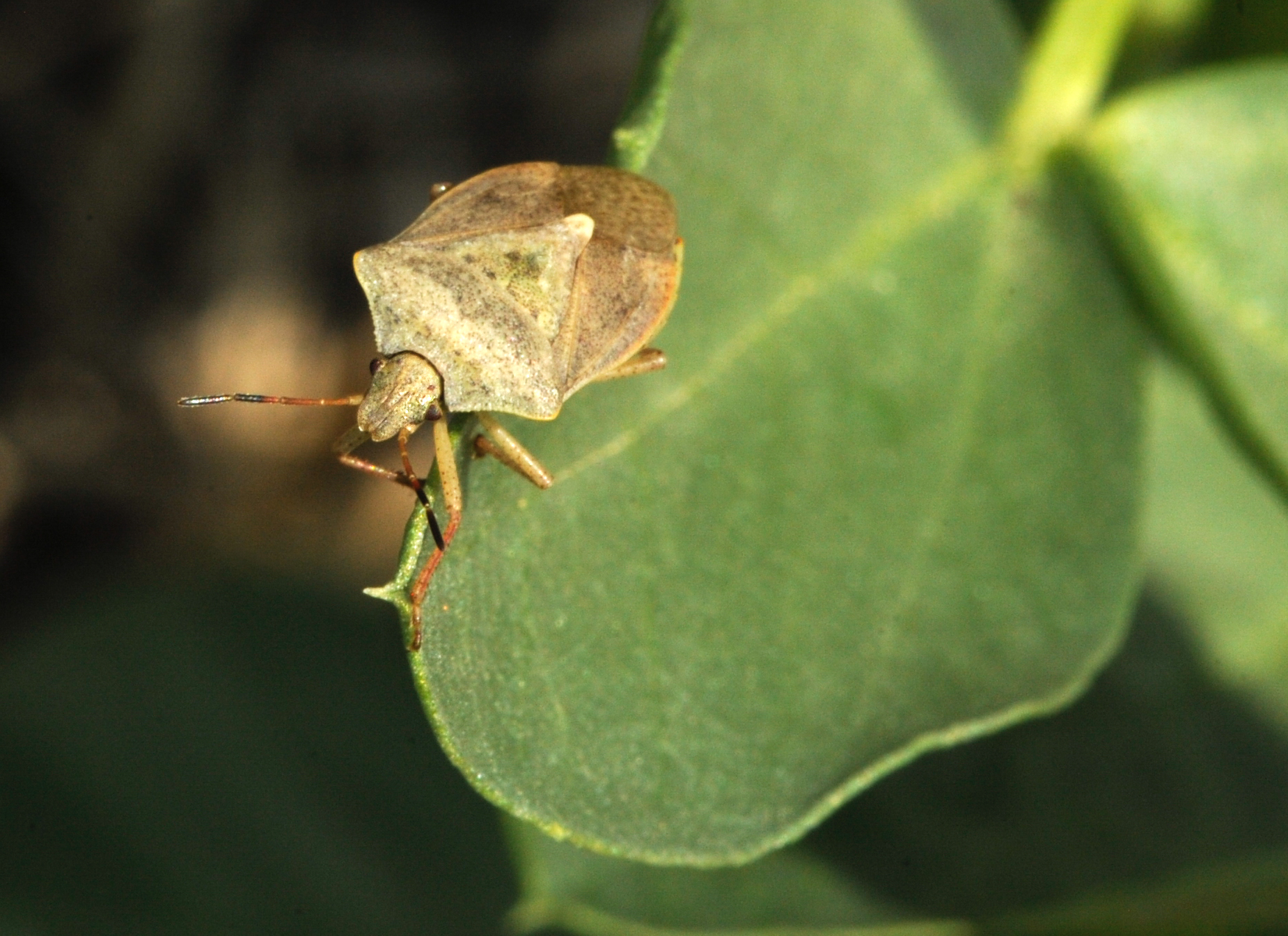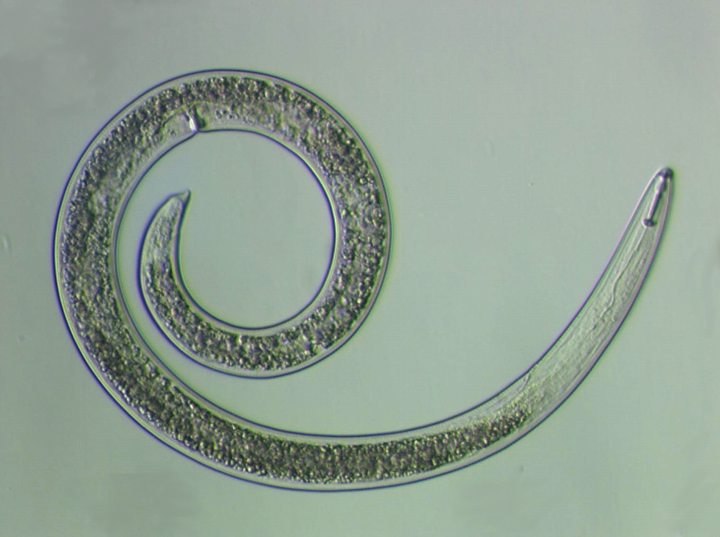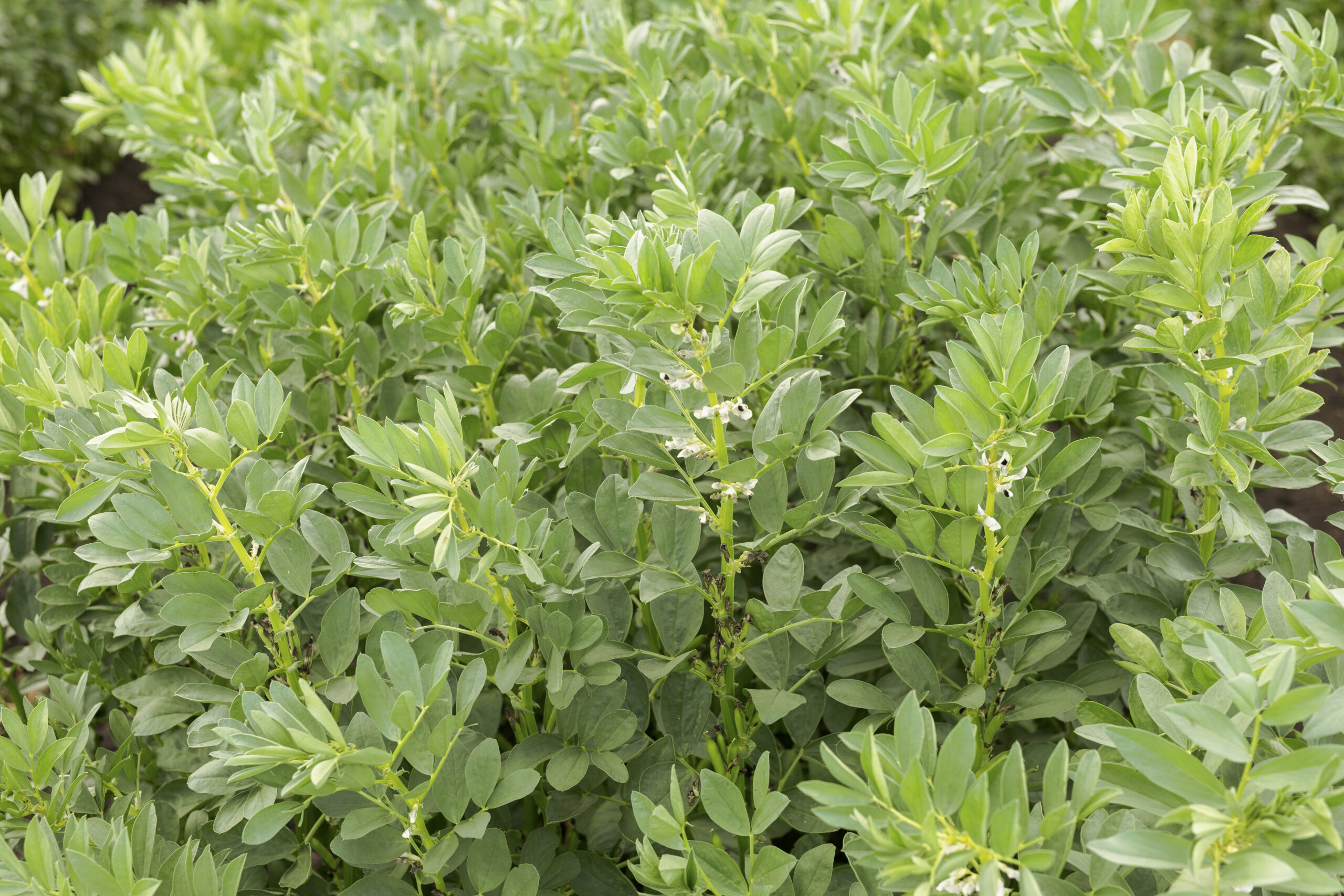Research Overview
The purpose of this project was to evaluate Lygus bug feeding behaviour, preferences, and patterns in faba bean in Saskatchewan, and to create resources to assess potential damage and manage the insects. This project aimed to fill knowledge gaps regarding the impact, behaviour, and distribution of Lygus species feeding on faba beans, to better understand their role in seed damage and yield loss.
The research was conducted across Saskatchewan, primarily through lab and field experiments and surveys, from 2019 to 2023.
How Feeding Duration Impacts Seed Quality and Yield
The first two objectives explored how Lygus feeding behaviour affects seed damage in faba beans (Figure 1). Using no-choice and Electrical Penetration Graph (EPG) bioassays, the study demonstrated that even brief feeding periods, such as 3 hours, can result in seed damage levels exceeding the economic threshold (Table 1). These findings highlight the importance of feeding duration: more prolonged exposure to Lygus intensifies seed deterioration. Notably, both Lygus lineolaris and Lygus elisus produced similar damage, indicating that management efforts should prioritize minimizing feeding time rather than distinguishing between species (Table 2).
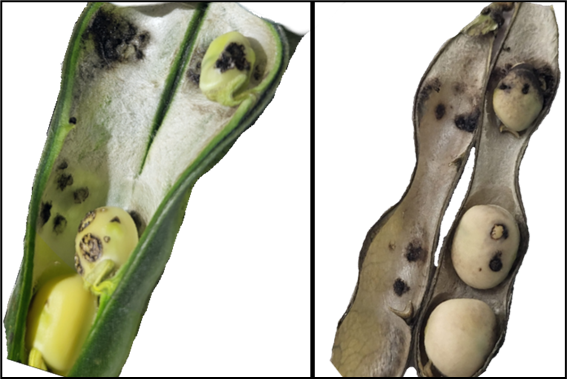
Longer feeding durations by one Lygus significantly increased seed damage and weight loss, with the most pronounced damage occurring after 48 hours of feeding, regardless of species, confirming a direct relationship between feeding activity and reduced seed quality.
Table 1: Percentage of seed and weight damage in faba bean caused by Lygus under different no-choice feeding durations
| Number of Lygus | Time | % of Weight | % Seeds |
|---|---|---|---|
| 4 | 96 hrs | 42.10% | 43.70% |
| 1 | 48 hrs | 12.54% | 13.22% |
| 1 | 24 hrs | 11.61% | 13.29% |
| 1 | 3 hrs | 1.17% | 1.20% |
| 1 | 1 hr | 0.61% | 0.81% |
Table 2: Results of Two-Way ANOVA assessing the effects of Lygus species, feeding duration, and their interaction on weight damage in faba bean
| Factor |
Degrees of Freedom (Df) |
Sum of Squares (Sum Sq) |
Mean Square (Mean Sq) |
F-value | p-value | Significance |
|---|---|---|---|---|---|---|
| Species | 1 | 1 | 1 | 0.9 | 0.941 | ns |
| Hours | 3 | 2,944 | 981.2 | 6.242 | 0.0008 | *** |
| Spp:Hours | 3 | 724 | 241.2 | 1.535 | 0.213 | ns |
| Residuals | 72 | 11,318 | 157.2 |
After 6 hours of feeding, only a few adults, particularly males, deposited saliva in seeds, while nymphs showed no evidence of saliva deposition, suggesting that saliva-mediated damage is more associated with adult feeding behaviour and may be limited in its impact on yield during early feeding stages.
Given that Lygus insects can cause economically significant damage in a short feeding period, often surpassing the Canadian Grain Commission’s 1% threshold, it is crucial to re-evaluate this standard considering the rapid injury potential. Updating the damage threshold could lead to more effective pest management strategies and improved protection of faba bean yields.
Host Plant Preferences and Trap Crop Potential
The third objective explored Lygus bug host plant preferences to identify effective trap crops to reduce damage in faba bean cultivation. The results confirmed that Lygus exhibits selective feeding behaviour depending on plant species, with notable differences observed between the sexes (Table 3). Males tended to prefer faba beans, whereas females favoured canola, likely due to differences in nutritional requirements associated with reproduction. This experiment also identified alfalfa as a highly attractive host for Lygus. Introducing alfalfa as a trap crop in faba bean systems may therefore help divert Lygus feeding away from economically important crops. Future research should also consider integrating trap crops with biological control agents to strengthen IPM approaches.
Although overall differences were not statistically significant, choice tests using canola, alfalfa, faba bean, pea, and flax revealed sex-based host plant preferences, with a notable trend suggesting that male Lygus may prefer canola. In contrast, alfalfa appeared to be attractive to both males and females.
Table 3: Mean (±SE) relative percent of Seed Damage (SD) and Weight Damage (WD) produced by Lygus lineolaris during the choice experiment per plant choice by sex
| Choice |
Females – Mean (±SE) SD |
Females – Mean (±SE) WD |
Males – Mean (±SE) SD |
Males – Mean (±SE) WD |
|---|---|---|---|---|
| Faba vs. faba | 0.66 ± (0.44) | 0.64 ± (0.45) | 0.62 ± (0.62) | 1.22 ± (1.22) |
| Canola vs. faba | 0 | 0 | 3.72 ± (2.55) | 4.35 ± (3.08) |
| Pea vs. faba | 1.80 ± (1.05) | 1.30 ± (0.81) | 0.52 ± (0.52) | 0.31 ± (0.31) |
| Alfalfa vs. faba | 0.62 ± (0.62) | 0.70 ± (0.70) | 0 | 0 |
| Flax vs. Faba | 1.15 ± (1.15) | 0.82 ± (0.82) | 2.5 ± (2.5) | 3.52 ± (3.52) |
Spatial Distribution and Environmental Factors
The fourth objective investigated how environmental factors shape the distribution and abundance of Lygus species in Saskatchewan (Figure 2), offering insight into the roles that both biotic and abiotic variables play in regulating population dynamics (Figure 3). The study identified crop district and sampling year as the most influential factors affecting species composition. It revealed complex, species-specific associations between Lygus and environmental variables, including temperature, precipitation, and soil zones. These findings further emphasize that climate and geography influence Lygus species in distinct ways, which is essential for refining predictive models and designing species-specific control measures.
The spatial distribution and population density of Lygus species in Saskatchewan varied significantly by year and crop district. Species responded differently to environmental factors: L. lineolaris was strongly associated with cumulative degree days and total precipitation; L. borealis and L. elisus were more influenced by soil climatic zones and precipitation, while L. keltoni showed weaker responses overall.
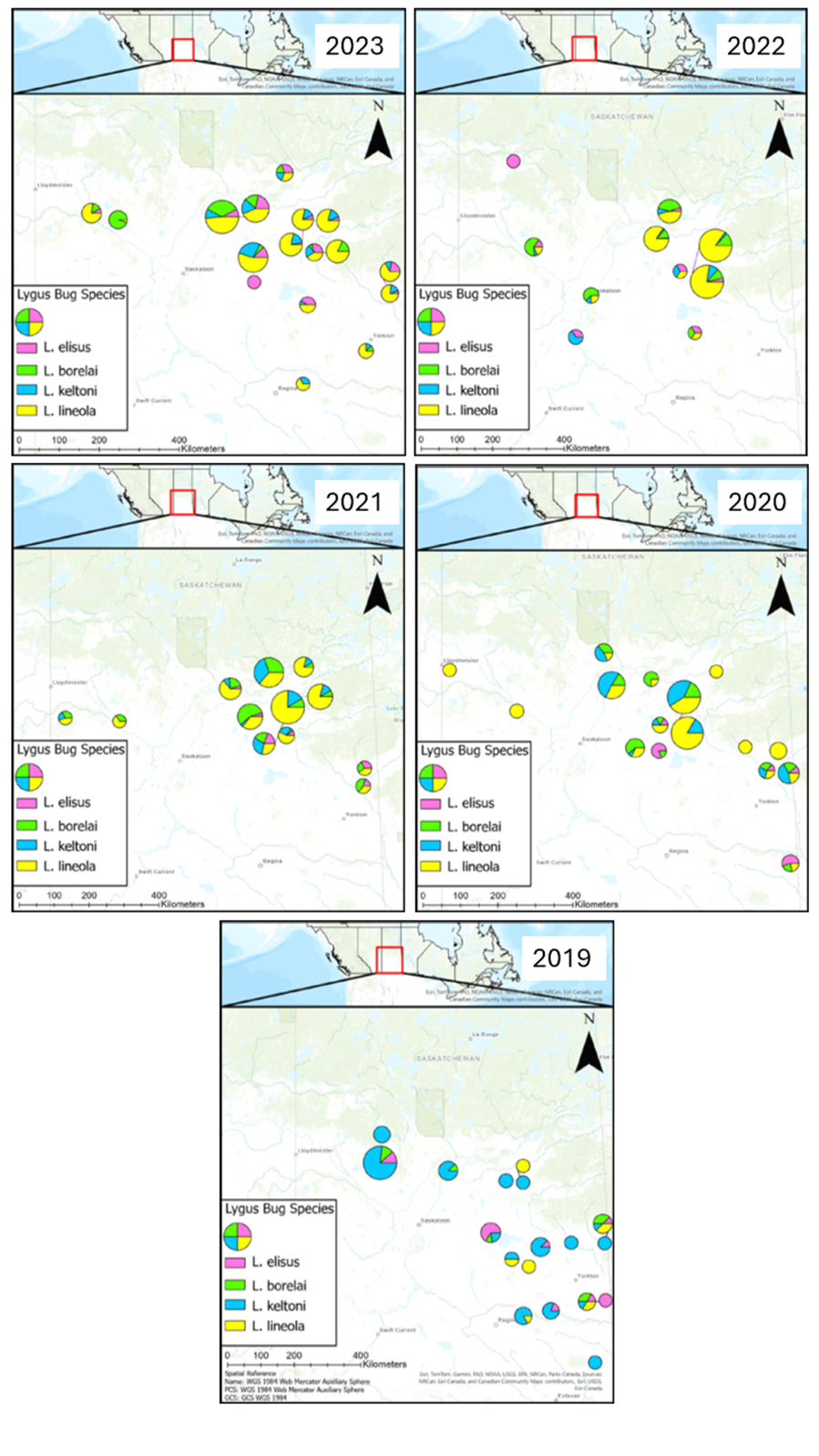

Future research should expand on this by exploring the influence of host plant availability, natural enemy communities, and landscape structure, as well as the long-term implications of climate change on Lygus population dynamics and species composition. Integrating these elements will be key to developing more effective and ecologically sustainable pest management strategies.
Benefits to Saskatchewan Faba Bean Growers
These outcomes offer significant benefits to farmers in Saskatchewan by providing a deeper understanding of Lygus feeding behaviour, host preferences, and the environmental factors driving pest outbreaks. This knowledge supports the development of more targeted and sustainable pest management strategies for faba bean production. Early intervention practices aimed at limiting feeding duration, combined with the strategic use of trap crops and adaptive approaches tailored to local environmental conditions, can reduce crop damage and associated economic losses.
